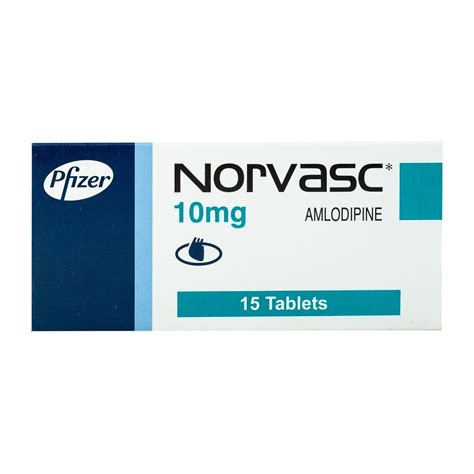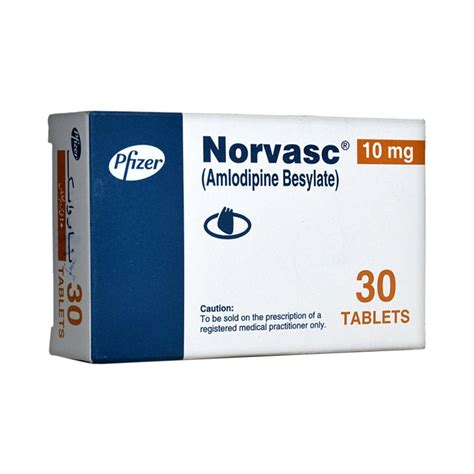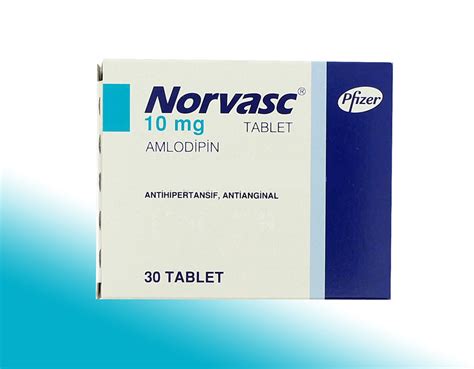Intro
Learn about Norvasc 10mg Tablet, a medication for high blood pressure and angina, with information on dosage, side effects, and interactions, including calcium channel blockers and cardiovascular health benefits.
Norvasc 10mg tablets have become a widely recognized medication in the management of hypertension and coronary artery disease. The active ingredient in Norvasc is amlodipine besylate, which belongs to a class of medications known as calcium channel blockers. These medications work by relaxing blood vessels, making it easier for the heart to pump blood and reducing blood pressure. With the increasing prevalence of cardiovascular diseases, understanding the role of Norvasc 10mg tablets is crucial for both healthcare professionals and patients.
The importance of managing hypertension cannot be overstated. High blood pressure is a significant risk factor for heart attacks, strokes, and kidney disease. When left uncontrolled, it can lead to severe complications, including heart failure and vascular disease. Norvasc 10mg tablets, by effectively lowering blood pressure, play a critical role in preventing these outcomes. Additionally, their use in patients with coronary artery disease helps reduce the frequency of angina attacks, improving the quality of life for those affected.
The mechanism of action of Norvasc 10mg tablets involves the inhibition of the influx of calcium ions into cardiac muscles and vascular smooth muscles. This action dilates the main coronary and peripheral arteries, reducing blood pressure and increasing oxygen delivery to the myocardium. The result is a decrease in the total peripheral resistance, which eases the workload on the heart and reduces the amount of oxygen it requires. This dual effect makes Norvasc 10mg tablets an effective treatment option for patients with both hypertension and angina.
Norvasc 10mg Tablet Benefits

Key Features of Norvasc 10mg Tablets
Some of the key features that make Norvasc 10mg tablets a preferred choice among healthcare providers include: - Their efficacy in lowering blood pressure and reducing the risk of cardiovascular events. - Their ability to improve exercise tolerance and reduce angina symptoms in patients with coronary artery disease. - A favorable side effect profile compared to other antihypertensive medications. - The convenience of once-daily dosing, which enhances patient adherence to treatment.Working Mechanism of Norvasc 10mg Tablets

Steps for Taking Norvasc 10mg Tablets
For patients prescribed Norvasc 10mg tablets, the following steps can help ensure effective and safe use: 1. **Take as Directed**: Adhere to the dosing regimen prescribed by your healthcare provider. Norvasc 10mg tablets are typically taken once daily, with or without food. 2. **Monitor Blood Pressure**: Regularly monitor your blood pressure to assess the effectiveness of the medication and to make any necessary adjustments. 3. **Report Side Effects**: Inform your healthcare provider about any side effects experienced, such as dizziness, swelling, or palpitations. 4. **Lifestyle Modifications**: Combine medication with lifestyle changes, including a balanced diet, regular exercise, and smoking cessation, to maximize the benefits of treatment.Norvasc 10mg Tablet Side Effects

Managing Side Effects
To manage side effects, patients can: - Stay hydrated to reduce the risk of dizziness. - Elevate legs to alleviate swelling. - Avoid standing up too quickly. - Consider taking the medication at bedtime to minimize the impact of side effects on daily activities.Norvasc 10mg Tablet Interactions

Avoiding Interaction Risks
Patients can minimize interaction risks by: - Informing their healthcare provider about all medications, supplements, and herbal products they are taking. - Avoiding grapefruit and grapefruit juice, which can interact with amlodipine. - Regularly reviewing their medication regimen with their healthcare provider.Norvasc 10mg Tablet Dosage

Titration and Maintenance
- **Titration**: The dose may be titrated upward every 7-14 days. - **Maintenance**: The maintenance dose is the smallest dose that achieves the desired blood pressure goal.Norvasc 10mg Tablet Precautions

Special Considerations
- **Pediatric Use**: Safety and efficacy in pediatric patients have not been established. - **Geriatric Use**: Older adults may be more sensitive to the effects of amlodipine, requiring careful dose titration.Norvasc 10mg Tablet Storage and Disposal

Safe Disposal Practices
- **Do Not Flush**: Norvasc 10mg tablets should not be flushed down the toilet or drain. - **Use a Take-Back Program**: Participate in a drug take-back program, if available, to ensure safe disposal.What is the primary use of Norvasc 10mg tablets?
+Norvasc 10mg tablets are primarily used to treat hypertension (high blood pressure) and coronary artery disease.
How do Norvasc 10mg tablets work?
+Norvasc 10mg tablets work by relaxing blood vessels, making it easier for the heart to pump blood and reducing blood pressure.
What are the common side effects of Norvasc 10mg tablets?
+Common side effects include edema, dizziness, headache, fatigue, nausea, abdominal pain, and flushes.
In conclusion, Norvasc 10mg tablets offer an effective treatment option for patients with hypertension and coronary artery disease. By understanding their benefits, working mechanism, potential side effects, and necessary precautions, patients can work closely with their healthcare providers to achieve optimal blood pressure control and reduce the risk of cardiovascular complications. We invite readers to share their experiences or ask questions about Norvasc 10mg tablets in the comments section below, and to consider sharing this article with others who may benefit from this information.
